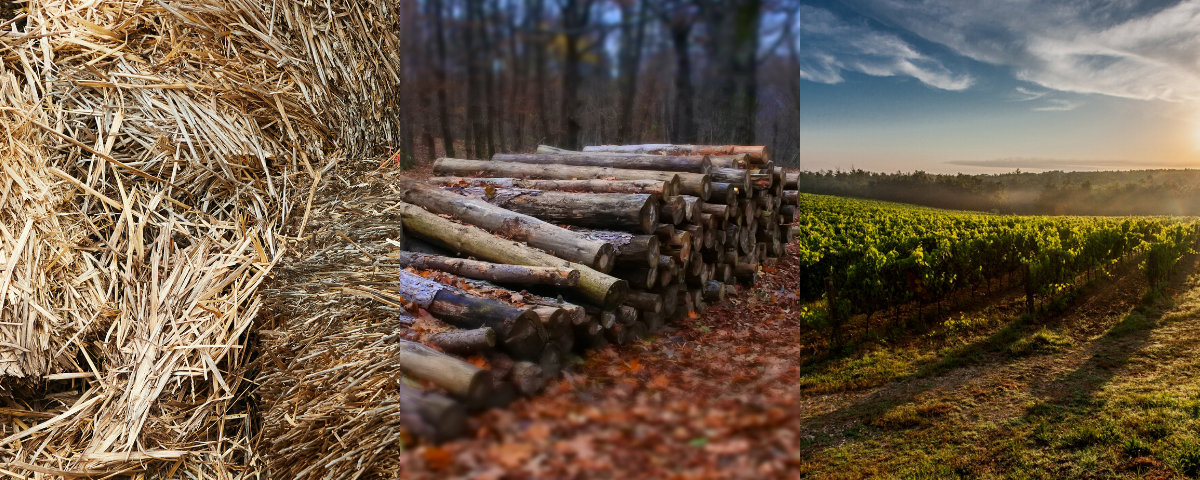Key Highlights
- Biomass can be an industrial climate solution if handled appropriately.
- Some examples of biomass energy sources are wood or wood wastes, biogenic materials, crops and waste materials, and animal manure or human sewage.
- In 2023, the UK Government will release a Biomass Strategy highlighting biomass's economic importance.
- The Biomass Innovation and Information Platform was created to demonstrate and share land-based biomass feedstock production best practises and innovations.
- Ceredigion, South Ayrshire, Buckinghamshire, Devon, Edinburgh, County Down, Tyne & Wear, and Yorkshire are UK demonstration sites for the biomass initiative.
Biomass has often been depicted as either "good" or "bad" for the environment, reflecting the polarisation of popular opinion on the topic. Nevertheless, the truth is far more complex. As long as it is handled properly, biomass has the potential to be a significant climate solution at industrial scales.
What is Biomass?
The non-perishable organic stuff that arises from plants and animals is referred to as biomass.
Some examples of energy sources derived from biomass are:
- Wood or wood wastes – These can include sawdust, scrap woods, firewood, and wood pellets and chips for heating
- Biogenic materials – These can be papers, cotton, food, or wool products
- Crops and waste materials – These are the crop or food processing residues that can be used as biofuel
- Animal manure or human sewage – These can be used to produce biogas
Here are some insights to know about biomass:
- Biomass replaces fossil fuels - The combustion of fossil fuels results in a long-term increase in the concentration of carbon dioxide in the atmosphere and releases carbon from its geological storage. On the other hand, when sustainably sourced, bioenergy systems balance emissions with regrowth in a continuous cycle.
- Correct biomass carbon accounting - The UN IPCC guidance for biomass greenhouse gas (GHG) emissions covers numerous sectors and avoids double counting. The UK adheres to these internationally recognised standards for carbon accounting and also has stringent sustainability criteria for reducing GHG emissions.
- Biomass and other renewables - Bioenergy, along with wind, solar, and other clean technologies, is a crucial part of any realistic route to Net Zero. The versatility of biomass aids in grid stability and the support of variable renewables like wind and solar.
- Negative emissions and BECCS - Climate change experts agree that negative emissions are necessary. BECCS and other carbon dioxide removal methods are "unavoidable" to reach net zero emissions, according to the UN IPCC.
- The crucial aspect of the bioeconomy - UK biomass comes from scrap wood, energy crops, agricultural wastes, and forestry byproducts. Biomass energy is a tiny but crucial part of the bioeconomy. Bioenergy markets replace fossil fuels and generate revenue for efficient and circular bioresource usage.
- Governance for sustainability - The UK Sustainability Criteria tracks emissions across the bioenergy supply chain. To minimise impacts on carbon stocks and biodiversity, renewable energy projects sponsored under the Renewable Obligation or Contracts for Difference programmes must report biomass source information.
- Maintaining biodiversity - Biomass contributes to a healthier, more resilient land sector. Perennial energy crops (PECs) and short rotation forestry (SRFs) maintain biodiversity, fix carbon in roots and soil, mitigate floods, pollinate, and reduce noise and air pollution. Fast-growing grasses and trees used for bioenergy create ecosystems that require fewer insecticides. With this, birds, insects, plants, and other organisms can thrive.
The biomass sector is working with the government to build biomass expertise, supply chains, and frameworks so biomass may fully contribute to our sustainable energy future. The UK Government is planned to issue a new Biomass Strategy in 2023, detailing biomass's crucial role in the economy.
The UK's Agricultural Biomass Initiative
The UK's Climate Change Committee, the International Energy Agency, and the United Nations Intergovernmental Panel on Climate Change are just a few of the leading climate authorities around the world that agree bioenergy is essential to achieving a carbon-free future.
With the goal of showcasing best practises and innovations in land-based biomass feedstock production, the Biomass Innovation and Information Platform was developed as a demonstration and knowledge-sharing project. To hasten the widespread adoption of cutting-edge clean energy technologies and processes in the years 2020 and 2030, the government has allocated £36 million from its £1 billion Net Zero Innovation Portfolio, to support the Biomass Feedstocks Innovation Initiative.
Eight locations in the United Kingdom serve as demonstration sites; these include Ceredigion, South Ayrshire, Buckinghamshire, Devon, Edinburgh, County Down, Tyne & Wear, and Yorkshire.
Establishing this industry focal point would assist the ambitious scaling up of both the bioenergy business and the planting needed to meet the Committee on Climate Change's net zero model, which predicts expansion from 10,000 ha to 730,000 ha by 2050.
The Shift to Biomass
In many countries, biomass remains an essential source of fuel, particularly for the preparation of food and the heating of homes in developing nations.
In order to reduce the amount of carbon dioxide released into the atmosphere by the combustion of fossil fuels, many developed nations are shifting towards a greater reliance on the power generating and transportation capabilities of biomass fuels.
Whether you have previously participated in All-Energy & Dcarbonise, or are joining us for the first time, we look forward to seeing you in Glasgow on May 10-11, 2023

